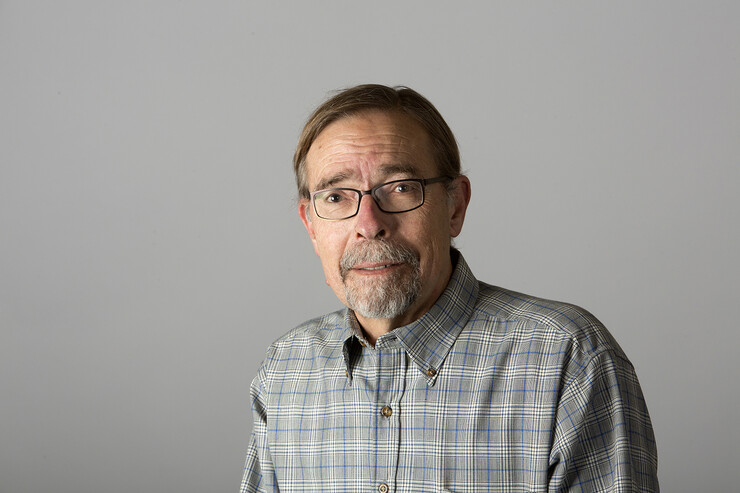· 5 min read
Hames fears how COVID-19 pandemic will affect the Amazon region

Ray Hames hasn’t seen his friends in the Amazon region for more than 20 years, but he finds himself worrying about them amid the COVID-19 pandemic.
“It scares the hell out of me,” said Hames, a University of Nebraska-Lincoln professor of anthropology. Hames spent some 35 months total living among the indigenous Yanomamö and Ye’kwana tribal peoples until 1999 when political changes in the region blocked visits by outsiders.
Hames has heard of one pandemic fatality among the tribes and notes that previous research has found that measles, which is rarely fatal in the developed world, can kill 20% of a village in a short time.
“I’m really fearful that COVID will devastate them.”
Hames last month was named to the National Academy of Sciences, only the fourth Husker overall and second living member of the prestigious organization. Much of this honor was based on his international expertise on the tribes that live in more than 200 villages in the Amazon rainforest on the border between Venezuela and Brazil, relatively isolated from national authorities and independently conducting inter-tribal political relations.
Hames traces his interest in his life’s work to reading National Geographic Magazine as a boy about these exotic, far-away places.
“It always just intrinsically fascinated me to see what life was like outside of the purview and control of the state,” Hames said. “I’m more of a field scientist than a lab scientist. I like to be immersed in what’s going on in real time in the real world.”
In getting to know the tribes, Hames found the way to earn trust was to provide tools and supplies they could use.
“You have to get rapport. You have to make friends,” he said. “One of the ways to do this is to provide things they need, give them away. These things have an immediate impact in terms of making their life a lot more efficient.”
Their traditional technology is based on wood, fiber and stone. They now depend on steel tools from the outside.
“It’s the material connection that initially greases your acceptance as a presence and a friend. Later you develop long-term relationships of friendship and reciprocity that allow you to come back time and time again,” he said.
Hames’s research rebuts one of the common tropes of indigenous tribes – the “noble savages” living in harmony with their environment and in peace with other tribes.
Indigenous people’s light footprint on the environment doesn’t come from a strategy or ideology but rather the fact they use simple technology and demand less from the environment than more advanced societies. Their economies are largely internal and based on reciprocity and barter.
“’It takes a village to raise a child’ is real there,” he said. “Families take care of kids of other families.”
And they fight – a lot. “Warfare is pretty common,” Hames said. In fact, research shows that 15 to 30% of males who make it to age 18 will die violently, mostly in inter-village warfare.
Other Hames’s research areas have included food and labor exchange, how skin-color variations affect susceptibility to skin cancer, birth order, warfare, the evolution of homosexuality and polyandry.
“My scope is pretty broad and eclectic. … I’m all over the damn map. I just follow my interests,” he said.
Hames’s research into polyandry has been of particular interest, and some misappropriation. Polyandry is the marriage of a woman to more than one man. While very much less common than men marrying multiple women, the practice is more common than once believed.
Graduate student Katie Starkweather wrote her MA thesis on the subject under Hames’s supervision. Their work led to a joint scientific journal article and was later featured in The Atlantic in 2013.
“It seems to occur most frequently in small-scale societies – hunter-gatherers,” Hames said.
Starkweather and Hames identified a sample of 53 societies that permit polyandry outside the Tibetan region previously known to allow it. The practice is most common in egalitarian societies, likely existed during early human history and emerges in societies where men greatly outnumber women.
Their work was misappropriated by believers in polyamory.
“Polyandry is marriage. It’s not fooling around and not free and easy, open marriages. It exists under a set of fairly stringent social rules,” he said.
The National Academy of Sciences is an honor society of distinguished scholars engaged in scientific, medical and engineering research. The NAS was established by an act of Congress that was signed by President Abraham Lincoln in 1863. Membership includes approximately 2,100 members and 380 foreign associates, of whom nearly 200 have won Nobel Prizes.
Members are elected in recognition of their distinguished and continuing achievements in original research. Election to the NAS is considered one of the highest honors that can be accorded a scientist or engineer. The other living member of the National Academy of Sciences from the university is James van Etten, William Allington Distinguished Professor in the Department of Plant Pathology, selected in 2003.








